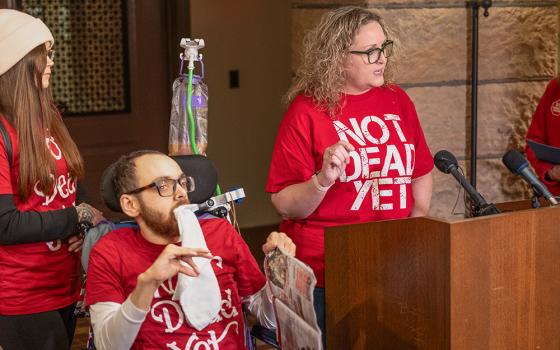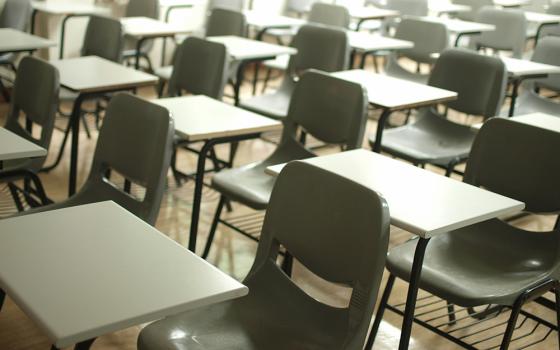The New York Archdiocese has announced that 26 of the 159 regional, parish and archdiocesan elementary schools are at risk of closing next June.
In addition, St. Agnes Boys High School in Manhattan also is at risk of closing at the end of the current school year.
The Monday announcement of "at risk" schools comes two years after the archdiocese closed 20 schools as part of a reconfiguration plan.
A decision about the future of Catholic schools on New York's Staten Island has been postponed until January while the region continues to struggle with the effects of Hurricane Sandy. Archdiocesan officials are meeting with local pastors, principals, administrators and elected officials for in-depth discussions on how to best serve the needs of school families.
In a posting on his blog Wednesday, New York Cardinal Timothy Dolan described the announcement of school closings as "very somber news."
"I dread this! I'd rather be opening new schools, not closing some," he wrote on his blog, "The Gospel in the Digital Age."
Children, teachers, parents and parishes love their schools and "fight hard to make them work! Some have just settled into these schools after the previous closing of others," he added. "This is very sad."
But the cardinal explained that "these tough decisions were long in coming, after over a year of study, discussion, consultation and debate by priests, parents and experts close to the scene."
He also noted that this second wave of closings "should be it." Although he said he couldn't promise that more schools wouldn't close, he said he did not envision a future announcement of dozens of closings.
In examining the future of Catholic education three years ago, archdiocesan officials approached the task with the traditional method of assessing how to effectively "make a good product even better" and put into place a number of academically oriented strategies, said Timothy McNiff, superintendent of schools in the archdiocese.
"We were confronted though with the unfortunate reality that there were very significant deficits the schools collectively were producing at the time," he said.
After a first round of closures in 2010-2011, officials realized that by themselves those closures would not satisfy all the deficits. "But we wanted to take a more deliberate approach," McNiff said, "and first change governance and leadership by inviting more laypeople to join pastors and we wanted to explore how can we bring in additional revenue into the system on a consistent basis."
The superintendent acknowledges the number of at-risk schools is high. "It is a big number," he said. At the same time, he said, the number is "distributed among the entire archdiocese, which is a very big archdiocese."
"But that doesn't ease the pain and angst for families and children" who will be displaced, he said.
To ease the transition, placement counselors will work with principals and displaced families "to help shepherd them to another Catholic school for next year."
The number of students on the combined rosters of the 26 at-risk elementary schools is 5,053 out of 50,045 currently enrolled in Catholic elementary schools in the archdiocese.
St. Agnes Boys High currently has 217 students out of a total of 24,830 pupils currently enrolled in Catholic schools across the archdiocese.
In the next step of the process, pastors and principals of the at-risk elementary schools will be invited to meet with members of the local board or reconfiguration committee in their region to discuss the combination of factors that led to their school being pinpointed and to review next steps.
Pastors and principals will be given the opportunity to share insights that may be relevant in the review or appeal process. The final decisions by local boards and reconfiguration committees, in consultation with the archdiocese, will be made in January.
In the interim, McNiff suggested that "the best thing a parent can do is just continue to mentor their children by explaining what is happening, the rationale for it," giving them confidence that their school is going to continue to be the same school that they've enjoyed for the remainder of the school year.
The announcement of the at-risk schools follows the completion of preliminary evaluations of the current status and long-term viability of the regionalized elementary schools in their respective regions by local boards for three pilot regions and ad hoc reconfiguration committees for six nonpilot regions, comprised of laity and clergy in parishes across the archdiocese.
The emphasis placed on the local decision-making process was outlined in "Pathways to Excellence," the strategic plan for Catholic schools published in 2010 and developed to assure a vibrant future for Catholic education in the archdiocese. Under that plan, most parish elementary schools will align into geographic regions governed by boards.
Regional boards and reconfiguration committees in every county in the archdiocese began their analysis of each school region this fall. The review incorporates all relevant data, including enrollment, financial, academic and local demographics, and ensures their decisions will result in financially healthy schools.
"What makes it so difficult -- we've said this before, but it bears repeating -- we're not closing failing schools," McNiff said. "Not when you look at test scores, graduation rates, attendance, safe environments. This is all about a lack of funds to keep schools open."
[Christie Chicoine is a reporter for Catholic New York, the archdiocesan newspaper.]



